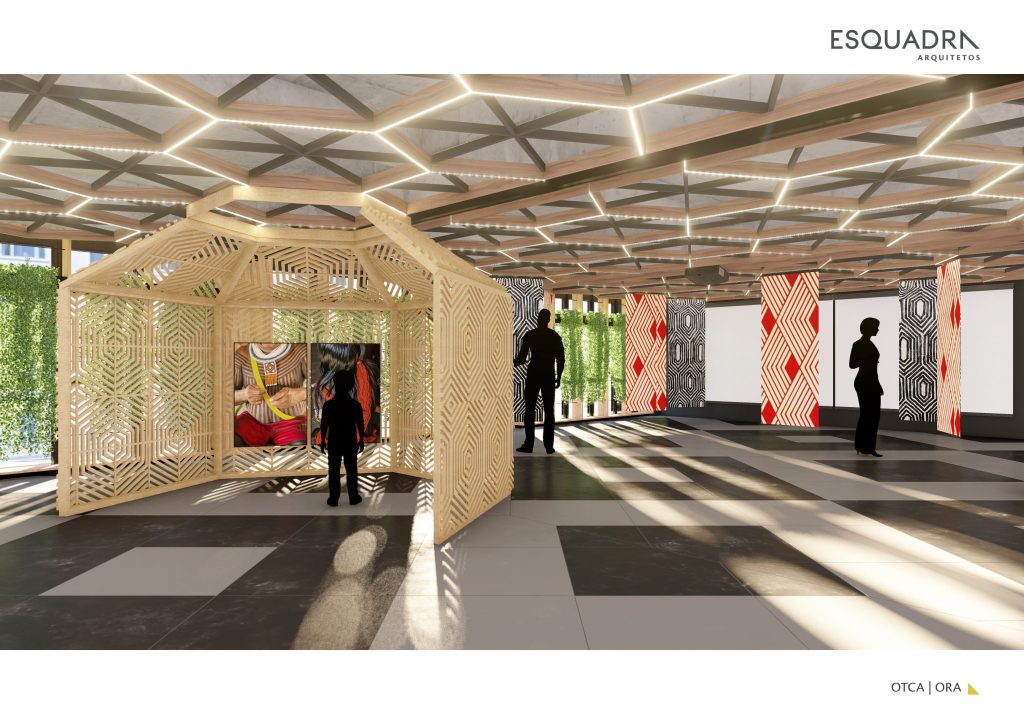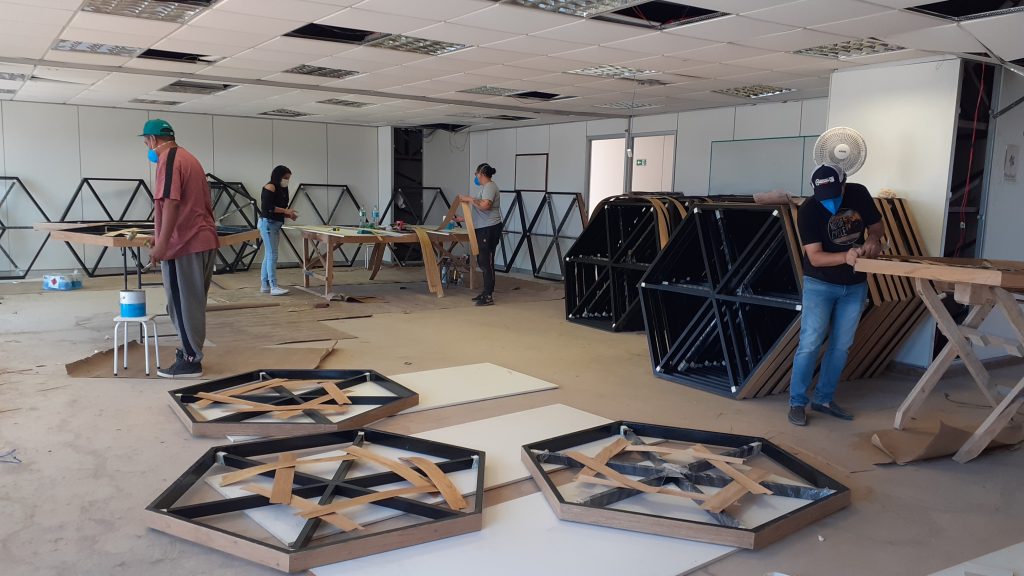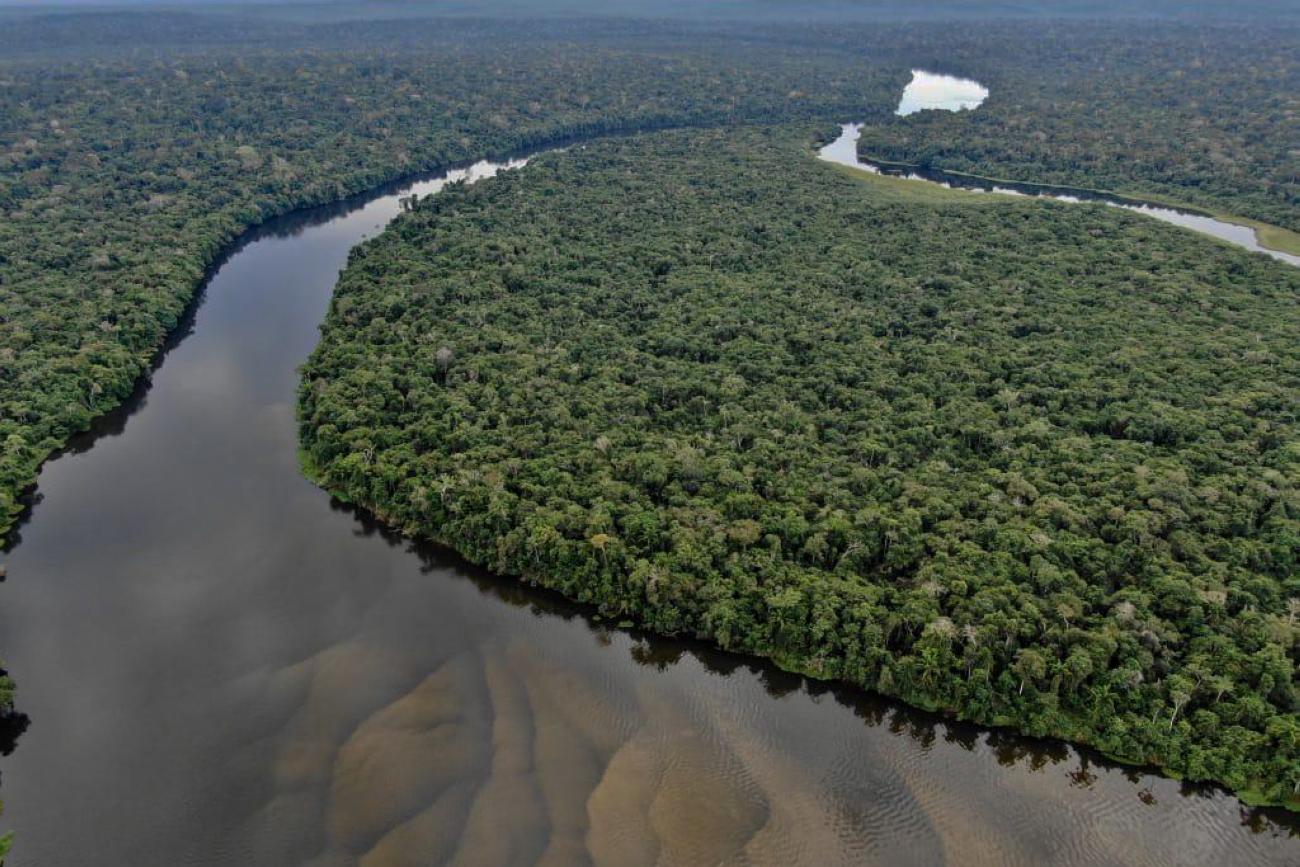Inauguration is scheduled for this semester
The Amazon Cooperation Treaty Organization (ACTO) is in full swing in the implementation of the Amazon Regional Observatory (ARO) and in the preparation of the launch, scheduled for this second semester. To this end, it is counting on the support of Member Countries, whose institutions have started the process of providing data that will feed this Reference Center in Regional Information, which will enable research and analysis on biodiversity, natural resources, and socio-diversity in the Amazon Region.
Planned in three phases, the implementation of the ARO modules has its first phase finalized with the development of the technological platform by the company IngenioSig and the development of the CITES Module by the company IquitosPlay. In this phase a database of flora and fauna species included in Annex II of the Convention on International Trade in Endangered Species of Wild Fauna and Flora (CITES) with geographical distribution in the Amazon basin was also generated; a tabular database of the red books of threatened species of the ACTO Member Countries – Bolivia, Brazil, Colombia, Ecuador, Guyana, Peru, Suriname and Venezuela – and a module of information and dissemination on the prioritized species of Annex I of CITES susceptible to illegal trafficking and that are emblematic for the Amazon Region, promoting the generation of public awareness on the presence of illegal trafficking of species in the region.
The second phase started in August with the development of the Biodiversity, Water Resources and Forests Modules, as well as the beginning of interoperability with the national systems oriented towards identification, data collection from the data generating institutions of the Member Countries and integration in the ARO database, and should continue until the end of this year. The development of the Indigenous Peoples Module should begin in September.
So far, Brazil, Ecuador, Guyana and Peru have started the data transfer, and Bolivia, Colombia, Suriname and Venezuela are preparing their information.
For Brazil, the institutions that shared data are the Forest Products Laboratory of the Brazilian Forest Service (LPF/SFB), the Brazilian Institute of Environment and Renewable Resources (Ibama), the National Institute for Space Research (INPE) and the Ministry of Science, Technology and Innovations (MCTI) that made available all the databases of the Information System on Brazilian Biodiversity (SIBBr) which includes the National Institute for Amazon Research (INPA), Botanical Garden of Rio de Janeiro (JBRJ), Emílio Goeldi Museum of Para (MPEG), National Museum of Rio de Janeiro (MNRJ), Long-Term Ecological Research Program (PELD), Biodiversity Research Program (PPBIO), among others. In total, to date, Brazil has made available to the ARO data from 510 databases, including biological collections, species identification keys, import and export information and licenses, legislation, and cartographic information, among others. IBAMA has made available all information on CITES from 2014 to 2019.
Ecuador, through the Ministry of Environment, Water and Ecological Transition (MAAET), shared its biological collection of species.
Guyana, meanwhile, through the Wildlife Conservation and Management Commission (GWCMC) sent information on exports of CITES-listed species for the year 2019.
Peru, through the Ministry of Environment (MINAM), National Forestry and Wildlife Service (SERFOR) and the Peruvian Amazon Investigations Institute (IIAP), shared their databases of Amazon species lists, biological collections, licenses, cartographic information, legislation, Non Harmful Extraction Findings (DENP), CITES information, among others.
The ARO will allow searches and offers users the possibility of geographic analysis, data and indicators. The information will be presented by means of maps, tabular reports, and graphs that integrate data and indicators at the Amazon basin level. It will also be possible to search and access relevant documents and publications on the themes of the ACTO Strategic Agenda.
The third phase, planned to start on next year, involves the development of three more Modules: Information System and Knowledge Management of the PS/ACTO, Network of Research Centers of the Amazon (RedCIA) and Regional Window of micro, small and medium enterprises with sustainable production of species of wild fauna and flora under CITES and within the framework of Component 3 of the Bioamazon Project.
Design
In 2019, ACTO management board made the decision and began an intense work to effectively implement the Amazon Regional Observatory.
In July 2019, ACTO hired the company Corporate Excellence (EXCO), through the Bioamazon Project, to prepare the conceptual, operational and financial design of the ARO. In this opportunity, a team from ACTO accompanied EXCO in visits to all ACTO Member Countries, where workshops were held to learn about the national institutions that generate data and the existing information systems, and received inputs and suggestions for the conceptual design.
In August 2020 the conceptual, operational, and financial design of the ARO was approved by the Permanent Secretariat of ACTO and the documents were made available to the Member Countries. In October 2020, after an evaluation mission of the Bioamazon Project, the German Development Bank (KfW) approved the implementation of the ARO proposed by ACTO in 3 phases.
Amazon Cooperation Treaty (ACT)
The implementation of the Amazon Regional Observatory is being driven based on the postulates of the Amazon Cooperation Treaty (ACT) signed by eight Amazonian countries in 1978, on the regular exchange of scientific information on the fauna and flora of the Amazon. The ACT establishes in its article 7 the need to promote scientific research and information exchange in order to increase knowledge about the flora and fauna resources in the Amazon territories, as well as to establish a regular system of adequate information exchange.
The task of developing and implementing the Amazon Regional Observatory was delegated to ACTO by a decision adopted during the XI Meeting of Ministers of Foreign Affairs in 2011. Since then, working groups with representation from ACTO Member Countries have discussed the concept, characteristics and format of the ARO, as well as the basic management structure and official information transfer components.
“Making the Amazon Regional Observatory a reality and thus complying with the Amazon Cooperation Treaty postulates is a challenge for which the Permanent Secretariat of ACTO has spared no effort. But this is only possible thanks to the support of the Member Countries and their political and scientific institutions and regional and international cooperation. The Observatory will soon be serving society as a whole, allowing consultations and analyses to increase understanding of the Amazon Region and enabling ACTO Member Countries to become even more integrated,” said Alexandra Moreira, Secretary General of the Amazon Cooperation Treaty Organization.
Facilities
In addition to being accessible via the Internet and open to all interested parties, the Amazon Regional Observatory will have its physical headquarters at the ACTO facilities in Brasilia.
As explained by the Executive Director of ACTO, Ambassador Carlos Lazary, the ARO will be a meeting place, a living and dynamic locus, interactive, technological, with a structure to support visits, virtual and face-to-face work. “Having human beings as the center of the process, it will be a window to the world, interconnecting all the scientific-political production that is elaborated about the Amazon and disseminating information and knowledge,” he said.
The Amazon Regional Observatory will have a Situation Room that will house the Amazon Hydrological Network (RHA) and the ACTO’s Water Quality Monitoring Network (RCA), in addition to monitoring various aspects related to water resources and critical events at the regional level of systematic way. The information will be disseminated through the technological platform created for the Regional Amazon Observatory. This room will have a videowall system equipped with 18 49-inch monitors, audio systems with digital processing, videoconference and multiconference, which will allow the visualization and interactivity of images, equipment and scenarios.
The Architectural Project, Interior Architecture, Scenography and Complementary Projects for the Amazon Regional Observatory at the PS/ACTO headquarters began, in March 2021, in a space with a usable area of 341.21 m² and floor to ceiling height of 3.30m, by the Company Esquadra Arquitetos Associados LTDA, which was approved by the Permanent Secretariat.

Architectural design of the ARO. Interactive exhibition spaces. Source: Esquadria Arquitetos.
Combining concept, synesthetic resources (sight, hearing, touch, smell), technology and art, the scenography provides surprising experiences, atmosphere rich in symbols, space for playful, striking, immersive and enchanting contemplation, imprinting the message of the ARO in the memory of those present as relevant substances capable of transforming the perception of the visitor.
The proposed scenographic solutions avoid causing physical obstacles and provide new purposes to the environments, when necessary, and are aligned with all the technological resources, infrastructure, interfaces, and equipment necessary for the functioning of the ARO.
The entire ARO space has acoustic ceiling, hexagonal light fixtures with LED lamps with luminosity reduction control, clean energy supply through the implementation of a photovoltaic plate system, and central air conditioning. The blinds have thermoacoustic properties and motorized activation that allow independence between the environments.
The integral concept of ORA also houses a space for exhibitions, workshops and international events, as it has an auditorium with capacity for 120 people equipped with interactive screens, monitors, fixed acoustic screens, transparent windows that allow the use of the space as a meeting place and other activities, meeting the requirements of high acoustic performance and the requirements of safety standards, without compromising privacy and acoustic comfort.

Architectural design of the ARO. Conference room. Source: Esquadria Arquitetos.
The ARO also has a space for a small library, work spaces equipped with computer infrastructure for its technicians and visitors.

Work to adapt the space for the Amazon Regional Observatory in July, 2021.
Published in Boletim Bioamazônia, issue 10, July-August 2021.
========================================================================



